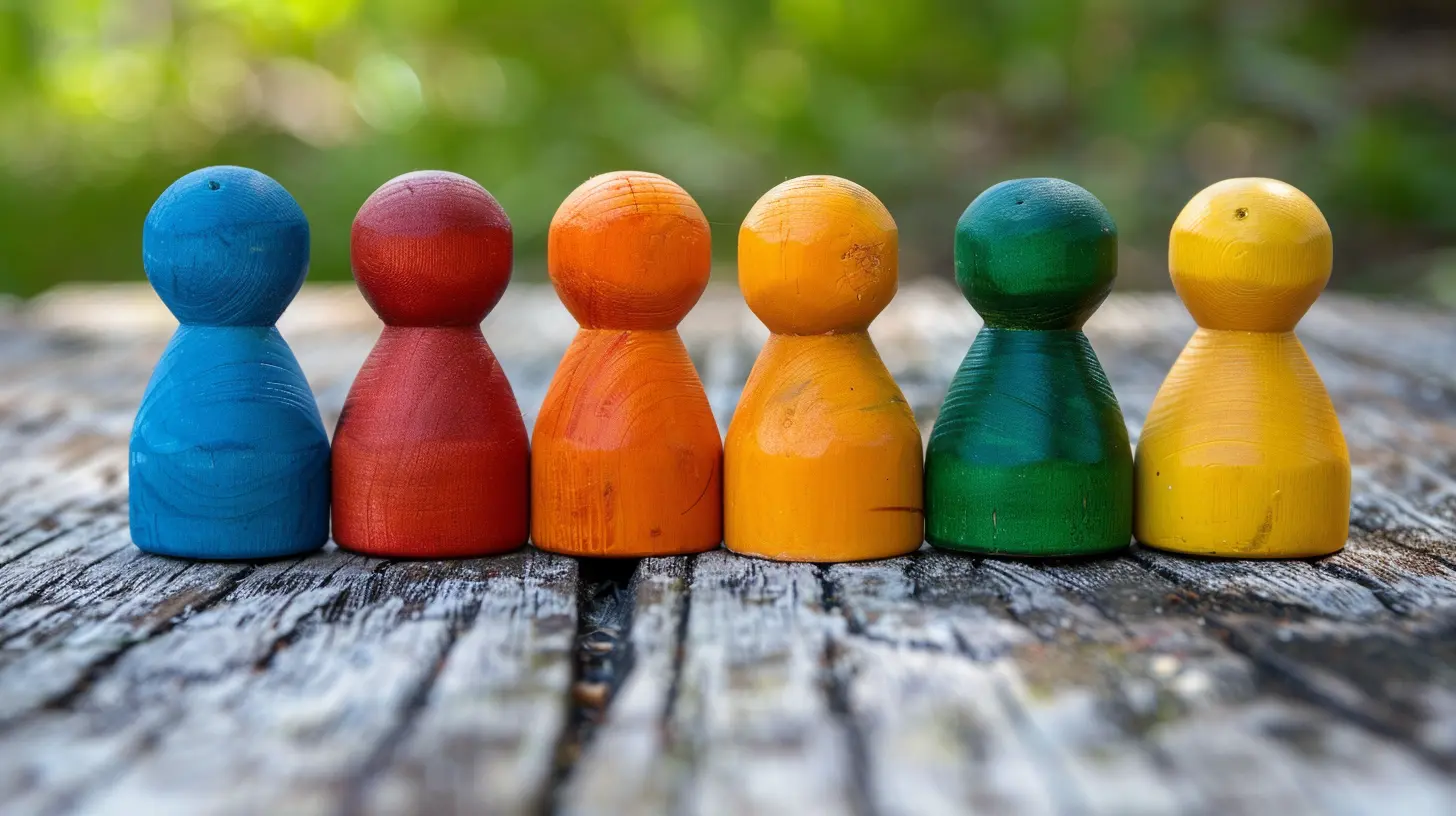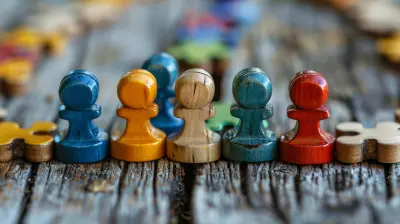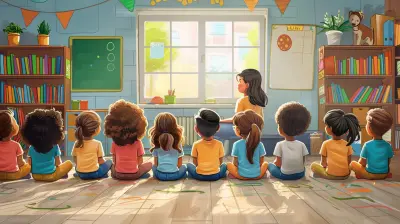Effective Collaboration in Team-Based Learning: Lessons for Educators
22 June 2025
Teamwork isn't just a buzzword you hear in faculty meetings or read in curriculum papers — it’s the skeleton of powerful, long-lasting learning. Especially in today’s classrooms, where collaboration has become the heartbeat of active learning, getting team-based learning (TBL) right can mean the difference between ho-hum student engagement and vibrant, dynamic classrooms.
But here's the catch: collaboration isn't automatic. You can't just throw students into a group, give them instructions, and expect magic. As educators, we have to be the conductors of this symphony. Let's unpack what makes collaboration effective in team-based learning and how we can strengthen those strategies in real-world classrooms.
Why Team-Based Learning Matters More Than Ever
Let’s be honest — we no longer live in a world where knowledge is enough. Today, students need to solve problems, think critically, and work together to navigate uncertainty. That’s where TBL comes in. It doesn't just deliver content; it fosters communication, empathy, and problem-solving.Think of TBL as a playground for building life skills — only more structured and with way fewer scraped knees.
From Passive Listeners to Active Learners
In traditional classrooms, students are often passive sponges — quietly absorbing content, taking notes, and preparing for the next test. But in a team-based learning setup? They become active participants, co-creators of knowledge. They discuss, debate, question, disagree (respectfully), and synthesize information in meaningful ways. That’s what real learning looks like.
Laying the Groundwork: What Makes Collaboration "Effective"?
Not all teamwork is created equal. Ever been part of a group project where one person ends up doing 80% of the work? Yeah, us too. That’s why effective collaboration is intentional. Here’s what makes it tick.1. Clear Roles & Responsibilities
Imagine playing soccer without knowing who’s the goalie or the striker. Chaos, right?Same goes for group work. Setting clear roles within the team helps reduce confusion, avoids freeloading, and builds accountability. Whether it's a "team leader", "recorder", or "devil’s advocate", each member should know what they bring to the table.
2. Psychological Safety: The Secret Sauce
Teams thrive when everyone feels they can speak up without fear of being judged or shut down. When students feel safe, they take intellectual risks. They ask questions. They offer different perspectives. And that’s where growth begins.Creating psychological safety doesn’t happen overnight. It needs a classroom culture rooted in respect, openness, and empathy.
3. Structured Collaboration Tools
Ever tried to row a boat without oars? That’s what teams feel like without structure. Tools like “Readiness Assurance Tests,” peer evaluations, and solving real-world applications give group work direction and purpose.And guess what? Students don’t even realize they’re learning — it feels natural and satisfying.
Lessons Educators Can Learn (and Teach)
Alright, so we know team-based learning is powerful. But how do we, as educators, unlock its full potential? Here comes the good stuff.1. Shift the Power: From Instructor to Facilitator
Let’s burst a myth: being the “sage on the stage” isn’t the most effective teaching method anymore. In TBL, your role shifts from a lecturer to a learning facilitator.Think of yourself as the host of a dinner party. You bring people together, set the tone, get the conversation started — and then step back. Giving students autonomy fosters ownership and deeper learning.
2. Curate Not Just Content, But Experiences
TBL isn’t about dumping content in front of a group and hoping collaboration kicks in. It's about designing learning experiences. This means crafting problems that are relevant, authentic, even provocative.Want your students to become critical thinkers? Give them messy, real-world problems where answers aren’t black and white.
3. Master the Art of Forming Teams
Here's a golden nugget: how you form teams really matters. Random groups might encourage diversity, but mixing personalities, skill levels, and backgrounds thoughtfully can spark better collaboration.Pro tip? Keep teams consistent over time. Trust and collaboration grow when people work together repeatedly.
4. Nurture Reflection and Feedback Loops
Collaboration without reflection is like climbing a mountain without stopping to enjoy the view.Make space for individual and group reflection. What worked? What didn’t? Who showed leadership? Who needs support? Peer evaluations help students hold each other accountable and develop soft skills.
Common Pitfalls and How to Avoid Them
Even with the best intentions, TBL can go sideways if we’re not careful. Here’s what to watch out for (and how to dodge these learning landmines).1. Unequal Participation
There’s always a risk of some students dominating and others fading into the background.👉 Solution: Rotate roles regularly, use structured tasks, and keep peer feedback as a routine part of the process.
2. Poorly Designed Tasks
Generic or oversimplified group tasks don’t inspire much discussion or critical thinking.👉 Solution: Design tasks that are challenging, ambiguous, and rooted in real-world scenarios. Push students to wrestle with content.
3. Time Mismanagement
Sometimes teams stall, drag conversations, or get information overload.👉 Solution: Use timers, checkpoints, and clear deliverables to keep things on track and maintain momentum.
Mixing Tech with Teamwork: A Modern Twist
Let’s face it — students are digital natives. So why not bring collaboration tools into the mix?Platforms like Google Workspace, Slack, Padlet, or Trello can make group work smoother. Not to mention, asynchronous collaboration platforms are a lifesaver for blended or remote classrooms. These tools encourage equal participation, organize tasks, and make reflection easier.
But don't go overboard. Use tech to enhance, not replace, the human interaction at the heart of collaboration.
Real Stories, Real Impact
Let me tell you about Ms. Carter, a high school science teacher who turned her average students into a powerhouse team. She started with structured group projects, rotating leaders weekly, and held reflection sessions every Friday.At first? It was rocky. Some students were shy, others too loud. But slowly, they found rhythm. The quality of discussions? Sky-high. Engagement? Off the charts. Confidence? Unbelievable growth.
You know what she said? "The magic wasn’t in the content. It was in giving them a reason to care — and listen to each other."
That’s the power of effective collaboration.
Collaboration as a Life Lesson
Let’s zoom out for a second. TBL isn’t just about better test scores or smoother class discussions. It teaches students how to be part of a community, how to lead, how to listen, and how to disagree with grace.These are life skills. Skills that employers crave. Skills that help our future doctors, engineers, artists, and leaders make informed, ethical, and compassionate decisions.
So yes, getting collaboration right might take some trial and error. But the payoff? Absolutely worth it.
Final Thoughts: Building a Culture, Not Just a Classroom
Effective collaboration in team-based learning is about creating a culture where every voice matters, every student feels seen, and every mistake is part of growth. It's a mindset as much as a method.As educators, we're not just teaching facts — we're shaping citizens of the world. That starts by modeling and nurturing true collaboration.
So next time you're planning your lessons, ask yourself: How will I make space for students to learn from each other?
Because when students teach each other, they don’t just remember — they transform.
all images in this post were generated using AI tools
Category:
CollaborationAuthor:

Fiona McFarlin
Discussion
rate this article
2 comments
Arwenia Bowman
Team-based learning: where the only thing louder than the brainstorming sessions is the sound of ideas colliding! Just remember, collaboration is key—unless you’re sharing snacks. Then all bets are off!
November 9, 2025 at 5:37 AM

Fiona McFarlin
Absolutely! Collaboration drives creativity, but let’s not forget the importance of snack-sharing etiquette! It’s all about balance!
Runehart Patel
This article beautifully highlights the power of collaboration in education. Understanding diverse perspectives fosters a supportive learning environment. Thank you for providing these valuable insights that can truly enhance team-based learning experiences for both educators and students.
June 26, 2025 at 2:27 AM

Fiona McFarlin
Thank you for your thoughtful comment! I'm glad you found the insights on collaboration valuable for enhancing learning experiences.


